Think about where you are in your current ecommerce adventure. Maybe you’ve just setup a nice little shop to sell your new running shoe designs, or maybe your dropshipping business is building a solid customer base, and you need to bring on a few employees to manage all of the orders.
Everyone gets to that point where ecommerce marketing becomes a huge factor: see my other post with best marketing tips from top 50 online shops.
How do you step back and evaluate your current marketing tactics? Are you doing everything right, or can you implement other marketing campaigns to bring in more devoted customers?
Ecommerce marketing is a tricky subject because it’s tough to find all of the tips in one place. Luckily, we’ve done the work for you, guiding you on the path to marketing success and providing a list for you to stick on your wall and check off as you complete each ecommerce marketing method.
Keep reading to learn more.
Table of contents:
- 1. Create a Content Marketing Strategy Before Starting
- 2. Generate an Email Marketing Campaign That’s Automated
- 3. With Social Media, Consider Diversifying Your Platforms
- 4. Put a Personalization Strategy into Action
- 5. Make Your Own Original Content
- 6. Hit it Hard with Contextual Marketing
- 7. Opt for User Generated Content
- 8. Implement a Loyalty Program
- 9. Automate Your Social Networks
- 10. Reach Out to Customers in Their Native Languages
- 11. A/B Test Your Checkout Process
- 12. Optimize for the Mobile World
- 13. Think About Mobile Advertising
- 14. Start Targeting Wearable Technology
- 15. Hire Someone to Create Long Form Content
- 16. Use Social Ads for the Ideal Testing Atmosphere
- 17. Brand Yourself with Your Own Personal Flavor
- 18. Reveal the Identities of Your Authors
- 19. Create a Face (Possibly Fictitious) for Your Company
- 20. Build Authority with Online Discussion Areas
- 21. Personalize All Experiences
- 22. Make Your Delivery Options Better Than the Rest
- 23. Focus on Local Branding and Marketing
- 24. Look for Alternative Automated Marketing Techniques
- 25. Make How-To Videos for Creating a Connection and Showing Products
- 26. Get Creative with Your FAQs
- 27. Pack Photos Into All of Your Content
- 28. Turn Your Company into Its Own Media Outlet
- 29. Always Stay Up to Date on Industry News
- 30. Welcome Controversial Topics to Generate Discussion
- 31. Forget About Catering to Search Engines
- 32. Use Pay Per Click Marketing Wisely
- 33. Dip into the Reddit Pool
- 34. Upsell Your Products without Pushing Too Hard
- 35. Turn on the Image Boosters With Instagram
- 36. Use Tools to Reduce Abandoned Carts
- 37. Launch Stores on Multiple Platforms (Ebay and Facebook)
- 38. Optimize Your Email Capture Modules
- 39. Go Crazy With the Email Newsletter
- 40. Remind People About Their Wishlists
- 41. Test to Make Sure You Have the Fewest Amount of Steps for People to Get What They Want
- 42. Push Your Customers to Make Product Reviews
- 43. Focus on Free Marketing Options
- 44. Talk to Your Visitors
- 45. Allow Ratings in Discussion Areas
- 46. Generate Reports to Anticipate Future Sales
- 47. Implement a Plan for Monthly Market Research
- 48. Donate Products for Others to Review
- 49. Set a Plan for Onsite SEO
- 50. Find Something Awesome to Give Out
1. Create a Content Marketing Strategy Before Starting
Nothing good starts without building a plan. Just like a movie studio goes through the preproduction process, an ecommerce business needs a content marketing strategy. Write a list of all the methods you plan on using to reach out to customers, whether it be blog posts, videos or newsletters.
Make it a point to check in with this strategy every week or month, evaluating how the content creation and distribution process is going.
Quick note: we're trying a content-first approach with our own new online shop, called matcha tea.
So we're going to sell matcha tea on it (doh!), but for the first 3 months, we want to build an audience, get some search traffic so that we actually have some potential customers when we'll have the tea ready to ship. So far so good. Will keep you posted.
2. Generate an Email Marketing Campaign That’s Automated
Email marketing is the bedrock of effective ecommerce marketing strategies because it’s still one of the best methods for influencing your customers and convincing them to buy more.
Not to mention, consumers are known to open emails, even if they include simple advertisements. Use an email marketing campaign to keep in contact with your customers, send them helpful information and sell your products.
We've also built a comparison website called WebAppMeister where you can find the best email marketing software for your specific needs.
3. With Social Media, Consider Diversifying Your Platforms
Social media is always a tough sell for ecommerce companies since it’s tough to figure out which platforms work best in certain markets. There’s a simple solution to this. Diversify, and eventually cut the platforms that don’t work well.
It’s just like investing in stocks. You spread out the risk and realize which options are making you the most money. Create Facebook, Twitter, Pinterest pages. Spread your content through these mediums, and use social media analytics tools to understand which ones work best.
Even if one works better than another, spreading out your social media presence gives all of your customers a way to connect with your company.
Who knows? You may only have 100 followers on Facebook, but one of them may be your best customer. If you take away that Facebook presence you risk losing that person.
4. Put a Personalization Strategy into Action
Personalization is the best new form of marketing since no one wants to spend money on faceless companies. The idea is to brand your company along with a person, using one or two people as the “face” of your business.
Address people with their names in your emails, send out videos and images of your employees and show how your products are made. Every little detail of personalization makes your customers feel special and take a peek into the inner workings of your business.
CRMs like HubSpot are especially useful for this, as they allow you to organize and keep track of your customers' information so you can better tailor your interactions with them.
5. Make Your Own Original Content
Nothing builds a strong connection with your customers like original content. Tying into your content marketing strategy from above, you have the unique opportunity to choose between unoriginal or original content.
Many companies use content pulled from around the web in their ecommerce SEO strategies to free up time for other business tasks.
This, however, doesn’t have the same effect as original content. How would your customers respond if they knew an original company podcast came out every week?
Original content like videos, blog posts, audio segments, and eBooks help you build your ecommerce site as a knowledge base for those interested in learning more about your market.
6. Hit it Hard with Contextual Marketing
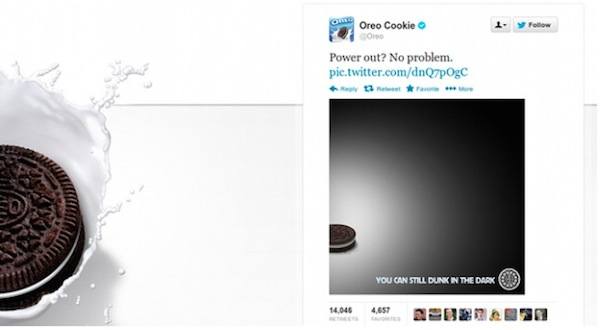
Contextual marketing has various meanings, but what we mean is using your marketing in formats that connect with your demographics, putting the messages in the right places at the right time.
The perfect example of contextual marketing is the famous Oreos Super Bowl tweet, where they played off the Super Bowl XLVII stadium lighting problem to show that “you can still dunk in the dark.” It was the perfect combination of timeliness and humor, to an audience that loves snacks during a game.
7. Opt for User Generated Content
User-generated content is a wonderful way to build interaction with your customers, while not having to put much money or time into the campaign on your end.
Doritos is known for holding a Super Bowl commercial submission contest every year, meaning that they don’t have to pay for a production crew to design a video.
This gets Doritos fans excited, and Doritos ends up with a commercial to air. This works well when you ask for people to submit pictures, videos or even blog posts.
8. Implement a Loyalty Program
A solid loyalty program brings people back to your store, and it makes them feel appreciated for spending money on your company. You convince your most loyal customers to spend a little extra money, and they receive a reward for doing so.
9. Automate Your Social Networks
Not all social content needs automation, but you’ll find that planning your social strategy frees up time for other tasks in your business.
For example, when you schedule a month of Facebook posts, you no longer have to think about it for the rest of the month. Moderating comments is still needed, but knocking out your social posts in one day means you don’t have to shift gears every week or day to post content on social networks.
10. Reach Out to Customers in Their Native Languages
It’s common for ecommerce stores to sell items to people all over the world. Just because you speak English doesn’t mean that you can’t sell a hat to someone who speaks Portuguese.
Reach out to foreign customers by providing translation features to your online store. Most ecommerce platforms, WordPress ecommerce themes, and WooCommerce templates provide translation settings so that you don’t exclude people in other countries who don’t understand your language.
11. A/B Test Your Checkout Process
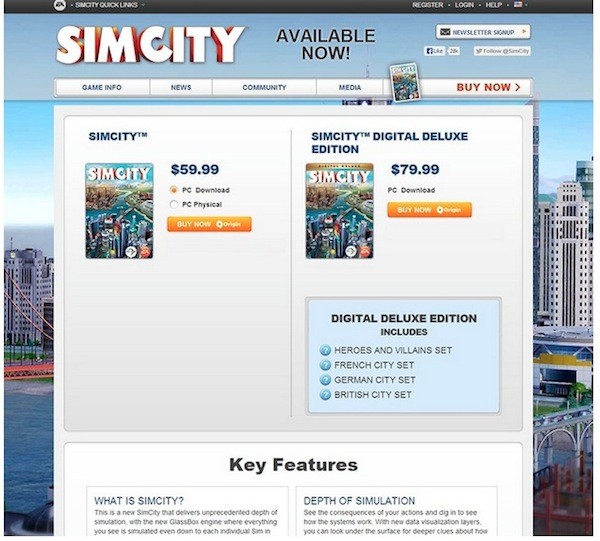
The folks behind SimCity are known to test out their checkout process on a consistent basis, leading to improved sales, because they know exactly what types of buttons and words convince people to buy.
An ecommerce marketing plan without A/B testing is sailing blind, so it’s essential to run tests throughout the entire checkout process. This helps you see where people abandon their carts or find it tough to pay you.
12. Optimize for the Mobile World
This has nothing to do with creating an app or mobile site. Nowadays your customers crave mobile responsiveness. They don’t want to open a completely different mobile site to see a mobile-friendly interface.
Consider implementing a responsive interface so that your ecommerce website transforms for devices like tablets and smartphones.
13. Think About Mobile Advertising
Mobile advertising combines geolocation and mobile-ready ads to connect your customers to your store while they are sitting on the train or in a doctor’s waiting room.
14. Start Targeting Wearable Technology
All the big tech companies are releasing wearable technology like watches and even glasses. How can you connect with these customers who have technology at their hands at all times? These interfaces look different than the average smartphone, so your company needs to adapt.
15. Hire Someone to Create Long Form Content
Long form content is a nice way to standout from all the regular blog posts out there. Long form content takes lots of time, so you may need to hire someone, but it dives deep into (sometimes boring) topics, making them engaging and useful for the most interested users.
16. Use Social Ads for the Ideal Testing Atmosphere
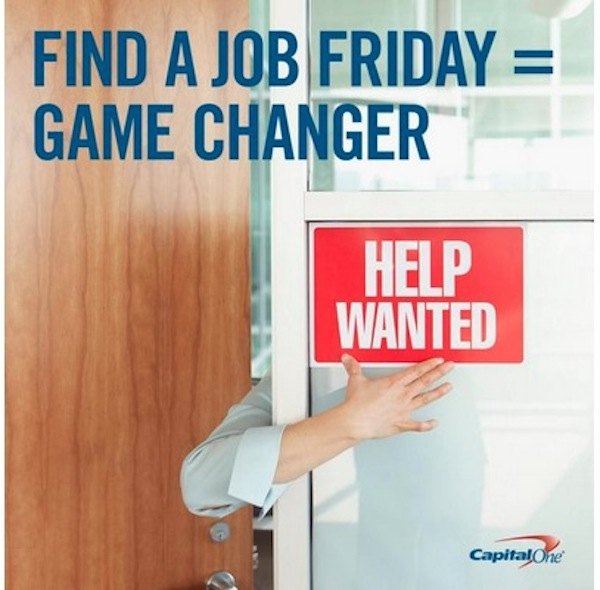
Social ads are interesting because you rarely have to spend a dime to test them out. For example, Facebook lets you send out as many posts as you want on your business page. Once one of the posts receives a bunch of likes and comments, you know that it’s something that customers are interested in.
Once you identify successful posts you can spend a little money and use the same posts as ads.
17. Brand Yourself with Your Own Personal Flavor
Placing a face on your company is one thing, but customers want to hear from the people who run the show. If you hire a few writers or content designers it becomes tough keeping one standard voice.
Develop a guide for these people so that they know you want a voice that communicates something fun or more professional.
18. Reveal the Identities of Your Authors
One way to get around the “one voice” dilemma is to reveal the identities of your authors. Branding under one name is fine, but your site visitors like to see all of the faces and names that contribute to your blog or video channel.
This develops your personalization strategy and reveals who is at work behind the scenes.
19. Create a Face (Possibly Fictitious) for Your Company
We talked about creating a face for your company above, but what about using a fictitious character? The Geico gecko is an ideal example since everyone associates the brand with the little green guy.
20. Build Authority with Online Discussion Areas
A forum is the most common way to build a community on your ecommerce store, and this is because people are familiar with the format.
Message boards, forums and even chat areas build your ecommerce store as an authoritative discussion platform, using a unique form of user-generated content to drive your store.
21. Personalize All Experiences
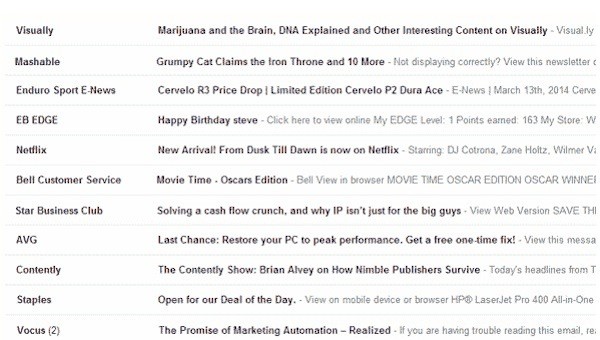
Building a personalized voice seems simple at first, but what about all of those random emails that go out to your customers? Every ecommerce store has dozens of emails that go out for confirmations, receipts, thank yous and more. Use customer names, provide relevant links and even ask customers to reply to your emails for the ultimate personalization.
22. Make Your Delivery Options Better Than the Rest
Zappos has a reputation for fast delivery and the occasional expedited delivery for random customers. This makes people feel special. Does your company stand out in terms of delivery? Think about ways to speed up the delivery process for an easy way to stand out from competitors.
23. Focus on Local Branding and Marketing
Not all ecommerce marketing plans require this, but if you have a connection with a brick and mortar store you can focus on local branding and marketing. Reach out to customers near your store with geolocation tools and local search engine targeting.
24. Look for Alternative Automated Marketing Techniques
Do you send out birthday or anniversary messages to your customers? What about automated messages when people sign up for your email campaigns or buy a product on your store?
Free up your own time, and give your customers a reason to come back with automated email campaigns.
25. Make How-To Videos for Creating a Connection and Showing Products
YouTube channels are always a fun way to connect with customers, but what about putting a hard focus on how-to tutorials? If you sell something like gardening gear, customers may not know the best ways to use the stuff they buy. Videos bring them back to your store and ensure they feel right about buying from you.
26. Get Creative with Your FAQs
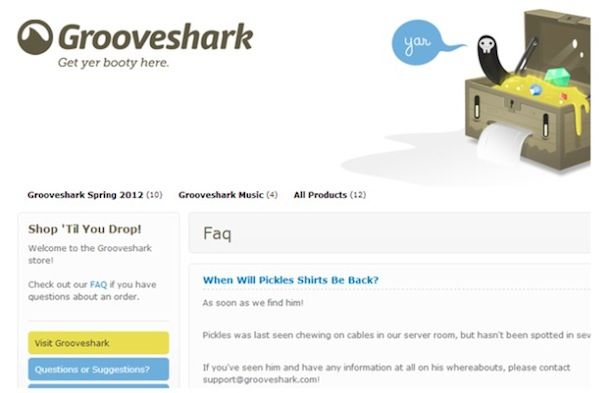
The FAQ page is an area that gets lots of visits to ecommerce stores, but does it show off your company culture? Think about whether or not you want to reveal a goofy or professional culture and let it shine in the FAQs.
27. Pack Photos Into All of Your Content
People are more likely to click on links and read through content if it includes photos. Stray away from stock photos and consider taking your own professional photos to keep people interested in your content.
28. Turn Your Company into Its Own Media Outlet
Creating a magazine or TV channel sounds like a stretch, but many companies are taking the jump to share their own original content on various different media outlets.
29. Always Stay Up to Date on Industry News
Industry news offers powerful content ideas for you to share with your customers. Some of this content may seem a little complicated for consumers, so it’s your job to break it down and make it easy to digest.
30. Welcome Controversial Topics to Generate Discussion
Do you sell gun holsters on your ecommerce website? Are you always creating blog posts that favor the freedom to carry guns? That’s way too one-dimensional. Customers are smart and want to hear arguments from all sides. Think about creating controversial content that will get people fired up.
31. Forget About Catering to Search Engines
One of the best ways to creep up search engine rankings and build social media shares is to completely forget about keyword optimization. Not only does this often look unnatural, but you can stand out with creative headlines and content.
32. Use Pay Per Click Marketing Wisely
Pay per click marketing is extremely cheap if used properly. Run numerous campaigns, and test all of them until you find the ideal options.
33. Dip into the Reddit Pool
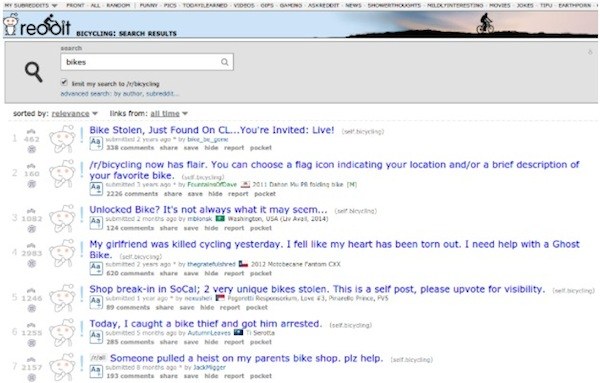
Reddit is a huge forum with discussion for everything from bikes to romantic fiction. Did you know that the platform offers advertising opportunities? Find the subreddits that cater to your industry and put this in your ecommerce marketing strategy.
34. Upsell Your Products without Pushing Too Hard
Hit your visitors with relevant product links, but stray away from constant upsells. VistaPrint is a good example of what not to do on your ecommerce site. They hammer customers with upsells, many of which don’t relate to the shopping cart.
35. Turn on the Image Boosters With Instagram
Instagram is a closed community for people who love images. If you can take photos of your products, Instagram is perfect for sharing product previews, your items in action and user-submitted content.
36. Use Tools to Reduce Abandoned Carts
A/B testing and user experience testing tools put you in the minds of your customers. Implement a few of these tools to find exactly why your customers are leaving your store.
37. Launch Stores on Multiple Platforms (Ebay and Facebook)
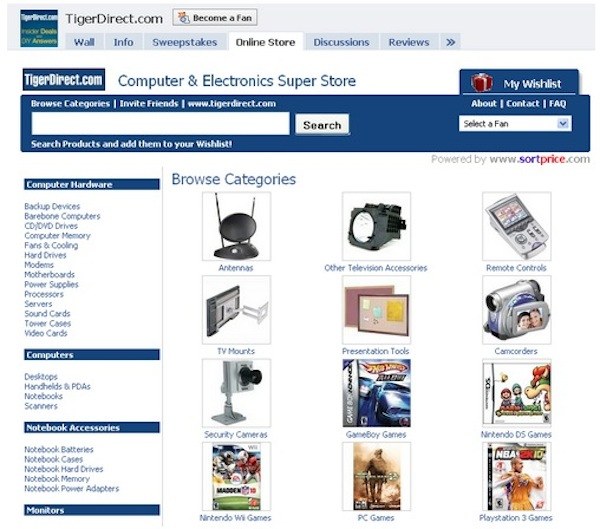
You can sell your items on platforms like eBay, Amazon, Etsy, and Facebook. All of these have new opportunities for revenue streams, so give them a try to find more customers.
38. Optimize Your Email Capture Modules
Does your email capture popup area turn customers off? Do you offer a promotion or free eBook for signing up? Using A/B testing to improve your email capture modules and bring in more subscribers.
39. Go Crazy With the Email Newsletter
The email newsletter is a message that goes out every week or month, and it’s completely un-automated. This is a chance to share unusual content and personal messages.
40. Remind People About Their Wishlists
Wishlists are often forgotten, but they show you the items that people have thought about buying. Consider sending out messages to get your customers to finish off the purchase process.
41. Test to Make Sure You Have the Fewest Amount of Steps for People to Get What They Want
The best way to do this is to have actual customers walk through your checkout process and send you feedback on how fast it was. Could you completely remove a checkout step? Only testing reveals the answer.
42. Push Your Customers to Make Product Reviews
Product reviews provide the quintessential social credibility, convincing other customers to buy products based on user feedback. How many times have you bought something online because of its ratings and reviews?
43. Focus on Free Marketing Options
Landing an article in a big-time magazine takes lots of work, and sometimes money. Why not turn to blogs with huge followings in your market? Just about every business can locate a blog that writes about its products.
Even better, if you approach smaller blogs, your submission usually only takes a few minutes, and it doesn’t end up in a huge pile of other submissions.
44. Talk to Your Visitors
Do you have a live chat module on your ecommerce site? Are you constantly responding to comments on your social pages? Visitors like to speak with people at your company, so give them the attention they crave.
45. Allow Ratings in Discussion Areas
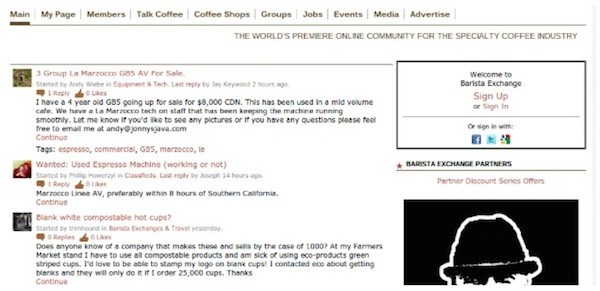
Forum and customer discussion areas work nicely, but what if you added an extra element to the community? Some businesses allow ratings in the forums, or you can earn badges when you comment a certain amount of times.
46. Generate Reports to Anticipate Future Sales
Use your reports to think about how you can change your ecommerce marketing strategy in the future. Without these reports, you can’t identify poorly performing aspects of your company.
47. Implement a Plan for Monthly Market Research
Are you coming out with a new product? Do you have any idea how your customers will respond? Market research puts the product in customer hands, giving you a taste of how they will see the new item.
48. Donate Products for Others to Review
You have a much better chance of receiving a review or magazine story if you send a product for the writers and editors to test out. Not only does this help with their review, but it works as a little gift for them to publish your article faster.
49. Set a Plan for Onsite SEO
Although your content strategy should focus on helping users and not search engines, your ecommerce SEO needs keywords to help the search engines identify you as a store that sells certain products.
50. Find Something Awesome to Give Out
Can you drum up buzz about your company with a raffle or free giveaway? Prompt people to share your company on social media for more entries. This also works well on email signup forms or simply to engage customers with cool contests.
I hope this list helps you in your ecommerce marketing journey. Let me know in the comments if you have any additions or questions.
Feature image curtsey of Adam Grason




I appreciate for theses wonderful tips, can really start from there
Thanks Rory!
Personalization is the key to create a good customer experience.
Personalization is very important. Every customer expects the website to know them well. When we start interacting with the customer in a more personalized way it will make them feel special.
You’re welcome!
Thanks, Catalin for the tips. Yes, indeed the mobile load speed can have negative or positive effects on your sales. Although one can also invest in an eCommerce mobile app like amazon or eBay.
Very informative tip list! Full of facts, would be hard to implement them all however it’s a great list to use when picking out a few tips that apply to your business. Thanks for sharing.
You’re welcome David! 😉
This article is really helpful. Thanks
You’re welcome!
I’ve just found that post doing research on e-commerce strategies. Awesome piece of advice. Signed up for more 🙂
Thanks Gabo!
Thanks for these helpfull informations, that will help me to grow up my structure.
Best regards.
Really helpful information. Thanks for sharing with us.
With PPC, you effectually skip over the middle circle which cost you. By avoiding your prospects’ inboxes, you’re only competing with marketers on a SERP, a pertinent website on the GDN, or Facebook / Instagram. You’re also getting a leg up on your contestants, who are probably only using an automatic email funnel to nurture prospects (if they’re doing it at all).
Thanks for your tips. It tough me a lot. But I think you are missing something to include in your article. And that is the importance of product’s images. If you have good quality and well edited product image on your website, it will increase your sales and attract a huge traffic
Thanks for the tips. I was wondering what’s the difference between automated emails and marketing automation (which includes emails)? My email platform, GetResponse, has marketing automation, but I didn’t have to chance to try it out.
Hi Monica, the marketing automation tool will allow you to setup, send and track your automated emails.
Check out our full GetResponse review for more info: https://ecommerce-platforms.com/email-marketing-services-reviews/getresponse-review-e-mail-marketing-service
–
Bogdan – Editor at ecommerce-platforms.com
Those automated emails certainly sound useful, but I guess it can’t be too automated. I’ll gladly check out your review of GetResponse. 🙂 Thanks!
Check out our GetResponse reviews below:
https://ecommerce-platforms.com/email-marketing-services-reviews/getresponse-review-e-mail-marketing-service
http://webappmeister.com/review/getresponse-review-2015/
Cheers!
Hi,
I just want to know if you can provide me some specific tips for an online tea-selling business.
Thanks
I like the email marketing part, which is more energetic and quick result, also the PPC part is too much beneficial because you got CTR Rate and generate more conversion.
I really enjoy this list and would like to shed on two points which you mentioned in the article. One is about using PPC wisely and the other is about focusing on FREE marketing option. I do agree with you but based on my experience working with eCommerce client, this strategy will not work at initial stage. I strongly recommend focusing on PPC initially, especially working on shopping feed will boost conversion and will give bandwidth to spend more on organic search marketing.
Very informative tip list! Full of facts, would be hard to implement them all however it’s a great list to use when picking out a few tips that apply to your business. Thanks for sharing.
Great tips! That should help out a lot. 🙂 Software like GetResponse offer marketing automation, email marketing, landing pages etc, so it’s easier to set up a strategy. I think that it’s good to coordinate it with the social media efforts too.
These are some great marketing tips, not just for e-commerce but for all fields! I think user generated content is great because it’s organic and honest, and it inspires people to get involved with your business. Let your customers do your marketing for you! Thanks for sharing the tips!
Planning for your onsite SEO is important, vital!
Excellent post, and enjoyed reading your post.
Tara, Ecbilla
Great list! I particularly noticed the emphasis on automating tedious tasks and paying special attention to personalizing the user experience. Users are often looking for the service that best caters to their individual needs, so it’s something to always be on the lookout for.
Great post!
Lots of inspiration within it. Certainly sticking around this site.
me too!!
Thank You So much.. Now I’m very much confident about my e-commerce business….
Thank you for a very handy guide. I’m already doing a lot of different online marketing, but you clearly gave me some new tips. Keep up the good work Catalin.
overdosing on tips i say. wondering if i would ever get time and energy to implement these
This is a great list Catalin – I would love to see an infographic version that bloggers could embed and link back to your super duper blog 🙂
Hi, Thanks for the article. Came around to know many ideas on tips on email marketing.
Thanks a lot CATALIN ZORZINI. I really appreciate your article. You have done a tremendous job here and I think it will really help me a lot to launch my Online store.
And hope I will use these all strategies before and after launching my online store.
Thanks Once again.
Very informative. It’s really helpful. Thanks for sharing…..
Glad you’ve found it useful Krishna!
I would like to say thank you for what you have done. I’m a beginner in email marketing world and now I’m testing free version of GetResponse software and now I feel much more confident in ecommerce marketing 🙂
Glad you like it Alassien, thanks for stopping by and leaving a comment 🙂
You have covered huge informative content which is quite helpful to boost your ecommerce growth.
Thanks Lata!
Great Stuff. Thanks for sharing. Everybody wants to make money online. But remember it’s easy to mess up as much as it is easy to do. So, you need to have identified your objectives and how you intend to achieve them before you set foot. As ecommerce grows, so do the opportunities for new business.
Make sure to pay attention on search engines laws of creating and sharing content, because it is not only fro audience, if its not according to search engine standards then it won’t be shown in search results.